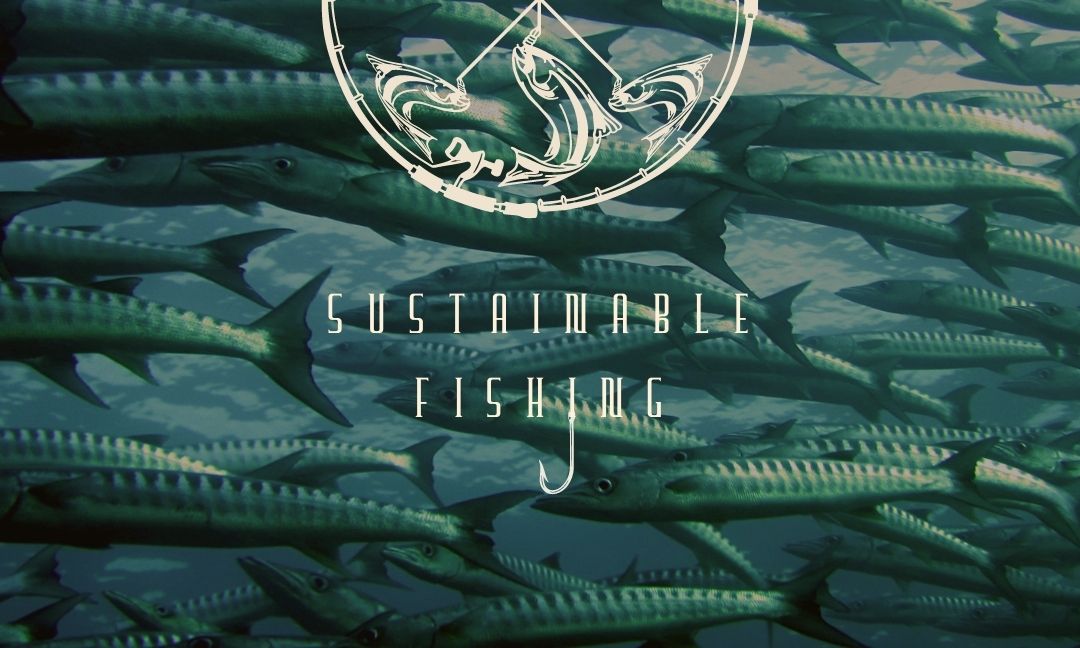Author: Reva Grewal
Editor: Emily Usprich-Couture
Graphic Designer: Emily Sheng
Publisher: Jumana Ismail
Today the topic of Sustainable Fishing will be broached, in terms of what it is, and how it affects the environment. Not all organizations that fish engage in modern-day sustainable fishing practices, but the ones that do will be examined. In particular, a differentiation between fishing regulations and choices to make when fishing will be compared. As a consumer, I will also leave some suggestions to purchase from organizations that engage in sustainable fishing practices.
To start, what exactly is sustainable fishing? As the name suggests, it is fishing that works to support the aquatic ecosystem and allow fish to remain a renewable resource. Basically, a limited number of fish are caught so as to leave fish behind in their habitats. This ensures that the fish are not fished to the point of extinction, and can continue to breed to create more fish. Hence, the sustainable term usage. Along that vein, the method in which fish are extracted cannot cause indirect casualties to other fish (bycatch), as that defeats the purpose of carefully selecting healthy populations of fish that can be fished from. Fishing sustainably is especially important for Canada, as we export 7 billion dollars worth of fish every year. If we wish to continue to export fish, we need to have fish available to export (Osborne, 2019).
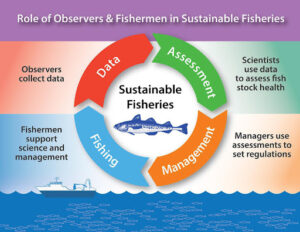
(Wang, 2019)
In particular, purse-seining and longlining methods of fishing have proven harmful if not regulated. Both of these methods entail collecting thousands of fish, one with a big net and the other by dragging along the bottom of the ocean. With that also comes the unintended consequence of bycatch (unwanted fish), which does not allow fish populations to replenish in time. In some parts of the world, people who fish do so at certain times of the year only, to allow populations to replenish. Areas can also be set aside as a sort of sanctuary for fish, where no fishing can occur. Traditional hook and line, rod and reel, or spearfishing methods are used for those who want to feed their families and local communities, but not commercially (National Geographic Society, 2012).
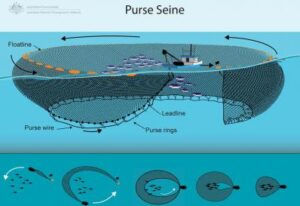
(Australian Fisheries Management Authority, n.d.)
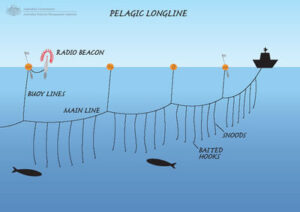
(FAFB, 2017)
Sustainable fishing can also help fight against climate change. Our oceans store carbon, even more so than traditional terrestrial forests! Fish themselves also provide protein that has a lower carbon impact than traditional livestock. If the gear used to catch seafood is also changed, the emissions produced from that gear can be reduced (Hayne, 2021). According to an assessment by the Blue Food Report, our ocean has huge potential for supplying consumers with environmentally-conscious sources of protein. The ocean contains high levels of variety with its organisms and can work to capture excess carbon in our atmosphere if properly maintained (Currey, 2021).

Ocean dissolved CO2 (ocean-climate.org, n.d.)
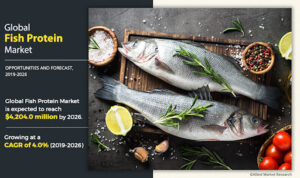
Fish as a protein source (Allied Market Research, 2020)
Seeing as sustainable fishing holds such a great deal of importance to our ecosystem, governments have stepped in to regulate fishing practices. The Government of Ontario is one such government, partly through the Provincial Fish Strategy as published in 2015. Much information is contained within that document, but to start, the Ministry of Natural Resources and Forestry will be collaborating with various organizations to monitor fish populations. Biodiversity will be protected and sustainable fishing will occur. Less focus will be on individual fisheries but instead, treating them as fisheries that belong to a broader scale. A risk-informed approach will be used for fishing. Continuing, there will be periodic evaluations to assess the progress of achieving these goals. Essentially in this plan, five goals are outlined: create healthy and supportive ecosystems for native fish populations, encourage fisheries that are sustainable to support Ontarians, establish an efficient fish management program, create policy for fisheries that is backed by science, and garner the involvement of stakeholders, partners, first nations, metis, and the general public communities (Government of Ontario, n.d.).

Common Lake Ontario Fish (LakeOntarioFishingCharters.org, n.d.)
To conclude, I will leave some suggestions for how to choose seafood that has been caught sustainably*. The most common emblem to look for, and one you may have seen before, is the Marine Stewardship Council emblem. The blue fish label allegedly indicates that everyone involved with getting you that fish complied with international standards for sustainable fishing and traceability (SGS Canada, n.d.). In addition, simply asking a store owner whether the fish you purchased had been fished sustainably or not is also a good way to ensure ethical consumption. Lastly, Seafood Progress is a website that examines what retailers are doing in ways of sustainable fishing, therefore you can use that website to check if the popular stores you purchase from are sustainable (SeaChoice.org, n.d.). The United States version of this application is dubbed Seafood Watch, which is also quite helpful and easy to understand. It works towards more specific brands of fish, as it is based on data collected at the Monterey Bay aquarium. However, it still contains data on fish harvested in Canada and works on a location rather than a brand basis (Monterey Bay Aquarium, 2019).

Blue Fish Label (Marine Stewardship Council, n.d.)
Thanks for reading and I wish you luck on your journey to consuming more sustainably!
Seafood Progress: https://www.seachoice.org/seafood-progress/*
Seafood Watch: https://www.seafoodwatch.org/*
*Waterloo School Region Food Gardens is not affiliated with or endorsed by any of the following corporations.
References
Allied Market Research. (2020). Global Fish Protein Market [Online Image]. https://www.alliedmarketresearch.com/fish-protein-market
Australian Fisheries Management Authority. (n.d.). Purse Seine [Online Image]. Retrieved February 2, 2022, from https://www.afma.gov.au/fisheries-management/methods-and-gear/purse-seine
Currey, R. (2021, October 21). How can fishing sustain us in a changing climate? Climate Champions. https://racetozero.unfccc.int/how-can-fishing-sustain-us-in-a-changing-climate/
FAFB. (2017). Longlining [Online Image]. https://www.findafishingboat.com/article/longlinging
Government of Ontario. (n.d.). Ontario’s provincial fish strategy. Ontario.ca. Retrieved February 2, 2022, from https://www.ontario.ca/page/ontarios-provincial-fish-strategy#section-8
Hayne, K. (2021, November 3). Opinion | How sustainable fishing helps in the fight against climate change. The Toronto Star. https://www.thestar.com/opinion/contributors/2021/11/03/how-sustainable-fishing-helps-in-the-fight-against-climate-change.html
LakeOntarioFishingCharters.org. (n.d.). Lake Ontario Fish Species [Online Image]. Retrieved February 2, 2022, from https://lakeontariofishingcharters.com/lake-ontario-fish-species-fishing-seasons-spots-the-biggest-fish/
Marine Stewardship Council. (n.d.). Blue Fish Label [Online Image]. Retrieved February 2, 2022, from https://www.msc.org/en-au/what-we-are-doing/our-approach/the-msc-blue-fish-tick
Monterey Bay Aquarium. (2019). Seafood Watch – Official Site of the Monterey Bay Aquarium’s Sustainable Seafood Program. Seafoodwatch.org. https://www.seafoodwatch.org/
National Geographic Society. (2012, October 9). Sustainable fishing. National Geographic Society. https://www.nationalgeographic.org/encyclopedia/sustainable-fishing/
ocean-climate.org. (n.d.). Physical Carbon Pump [Online Image]. Retrieved February 2, 2022, from https://ocean-climate.org/en/awareness/the-ocean-a-carbon-sink/
Osborne, L. (2019, March 27). What is sustainable fishing and what does it mean in the Great Lakes? Great Lakes Guide. https://greatlakes.guide/ideas/what-is-sustainable-fishing
SeaChoice.org. (n.d.). Seafood Progress. SeaChoice. Retrieved February 2, 2022, from https://www.seachoice.org/seafood-progress/
SGS Canada. (n.d.). Marine Stewardship Council (MSC) Certification. Www.sgs.ca. Retrieved February 2, 2022, from https://www.sgs.ca/en/agriculture-food/food/food-certification/marine-stewardship-council-msc-certification#:~:text=Agriculture%20and%20Food%20Marine%20Stewardship
Wang, Y. (2019). Figure 1 [Online Image]. In ResearchGate. https://www.researchgate.net/figure/The-role-of-observers-and-fishermen-in-sustainable-fisheries_fig1_332976951

